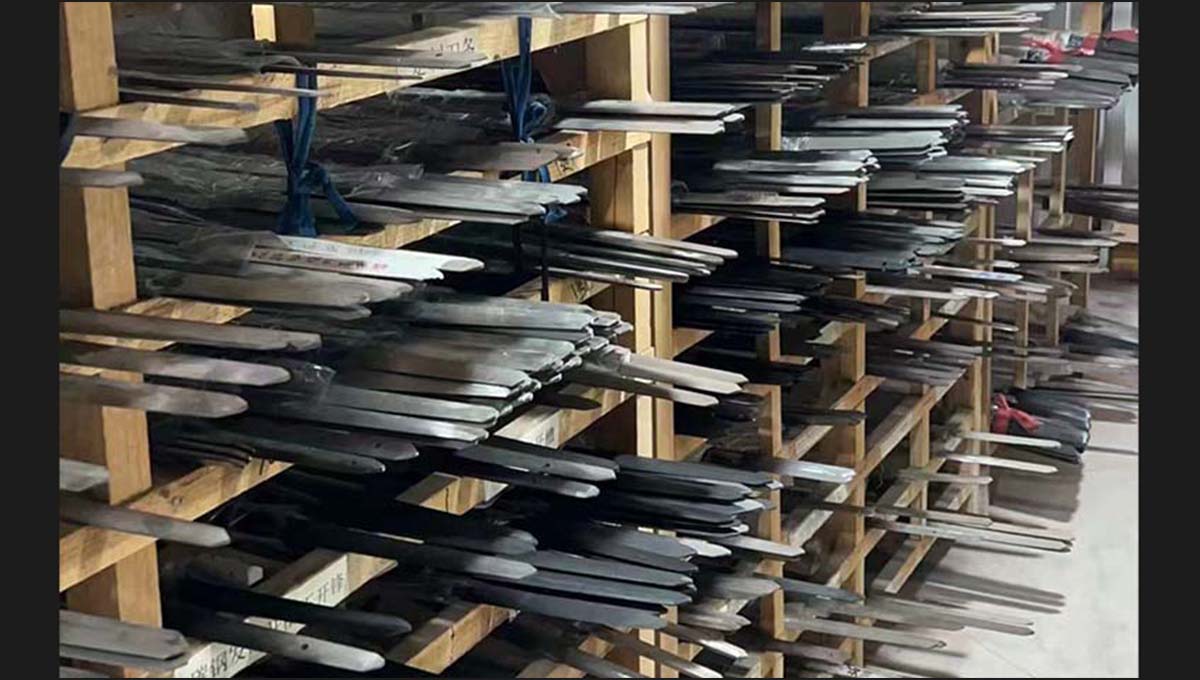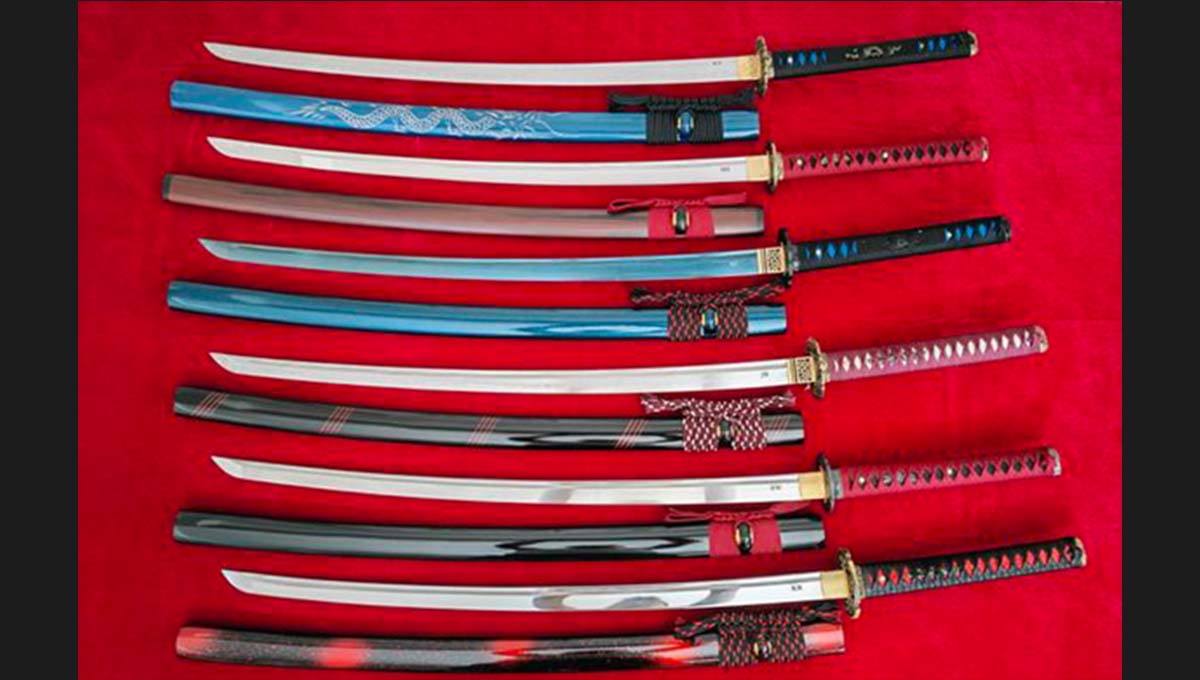Part One: Understanding the Basics of Samurai Swords
Before you embark on the journey of purchasing a samurai sword, there are several key factors to consider. In this article, we will delve into how to make a wise choice when it comes to samurai swords, covering aspects such as price, materials, brands, and other essential elements.
1.1 Types of Samurai Swords
Samurai swords come in different types, including the Katana, Wakizashi, and Tanto. Each type has its unique purposes and characteristics. The Katana is typically the longest and is used for combat and cutting. The Wakizashi is shorter and often serves as a secondary weapon and a symbol of social status. The Tanto is the shortest and has various applications, including ceremonial use, cutting, and self-defense.
1.2 Structure of Samurai Swords
The main components of a samurai sword include the blade, hamon (temper line pattern), tsuka (handle), tsuba (handguard), saya (scabbard), and craftsmanship details. The hamon is a decorative pattern on the blade, often created through the tempering process, adding to the sword’s artistic value. The tsuka features a braided material called tsuka-ito, designed for grip. The saya is typically made of wood and serves to protect the blade.
1.3 Materials and Craftsmanship
The quality of a samurai sword is closely tied to the materials used and the craftsmanship involved. High-quality samurai swords are usually made from carbon steel or folded steel. Damascus steel, known for its unique patterns, strength, and aesthetics, is also a popular choice. The crafting process requires experienced artisans who employ traditional forging and heat-treating techniques to shape the blade.
Part Two: How to Choose the Right Samurai Sword
2.1 Set a Budget
Before embarking on your samurai sword purchase, it’s crucial to establish your budget. Samurai swords come in a wide price range, from a few hundred to several thousand dollars. Your budget will directly influence the type and quality of sword you can acquire.
- Entry-level Samurai Swords ($200 – $500): Suitable for beginners or collectors, these swords often have lower material quality but can serve for display and basic use.
- Mid-range Samurai Swords ($500 – $1000): These swords generally feature better materials and craftsmanship, making them suitable for experienced sword enthusiasts.
- High-end Samurai Swords ($1000+): High-end swords are typically crafted by top-notch artisans, boasting exceptional materials and craftsmanship. They cater to professional collectors and sword enthusiasts.
2.2 Understand Materials
The material of the samurai sword is a key determinant of its quality and performance. Here are some common samurai sword materials:
- Carbon Steel: Carbon steel, a traditional choice, offers excellent sharpness and cutting performance. However, it requires additional maintenance to prevent rust.
- Damascus Steel: Damascus steel, with its unique patterns, is renowned for its strength and aesthetics. It is often the preferred choice for high-end samurai swords.
- Stainless Steel: Stainless steel, known for its rust resistance, is typically less sharp than carbon or Damascus steel. It’s suitable for swords intended for display and light use.
2.3 Brands and Artisans
Choosing reputable brands or artisans is crucial as they represent the sword’s quality and reliability. Some well-known Japanese samurai sword manufacturers include Boker, Cold Steel, and Hanwei. Additionally, you can seek out independent artisans with good reputations who may craft more personalized and unique swords.
2.4 Blade Features
Consider the blade features you require, such as hamon (temper line pattern), blade shape, and mirror polishing. These features can enhance the sword’s aesthetic value but also affect the price.
- Hamon (Temper Line): Hamon is a decorative pattern on the blade, often created through the tempering process. Different tempering methods produce various hamon effects.
- Blade Shape (Kissaki): Blade shapes can vary, including straight, curved, or tanto-pointed. Each shape serves unique purposes.
- Mirror Polishing: Some samurai swords undergo high-level polishing to create a bright blade surface, enhancing their visual appeal.
Part Three: Purchasing and Maintaining Samurai Swords
3.1 Buying Options
Once you’ve established your budget and desired sword features, you can select your preferred buying method. Here are some purchasing options:
- Specialized Samurai Sword Shops: Specialized stores often offer a wide selection and can provide expert advice.
- Online Retailers: Many online retailers offer various samurai sword options, but ensure you choose a trustworthy seller.
- Samurai Sword Shows and Exhibitions: Attending sword shows and exhibitions allows you to personally inspect and purchase swords.
3.2 Sword Maintenance
Once you’ve acquired a samurai sword, proper maintenance is essential to prolong its lifespan and preserve its quality. Here are some key maintenance considerations:
- Maintaining Sharpness: Regularly sharpen the blade to keep it sharp. You can use professional sharpening tools or seek assistance from professionals.
- Preventing Rust: If the blade is made of carbon steel, ensure it stays dry and apply rust-prevention oil when storing.
- Proper Storage: Store the samurai sword in a dry, well-ventilated area, away from direct sunlight.
- Regular Inspection: Periodically inspect the blade, handle, and scabbard to ensure they are not damaged or loosened.

Conclusion
Selecting a samurai sword is a significant decision that requires careful consideration of multiple factors. By gaining knowledge about different types of samurai swords, materials, brands, and maintenance practices, you can make a more informed choice that aligns with your needs and budget. Whether you are a sword enthusiast, collector, or artist, making the right selection and caring for your samurai sword will allow you to appreciate the precious heritage of this cultural tradition.

